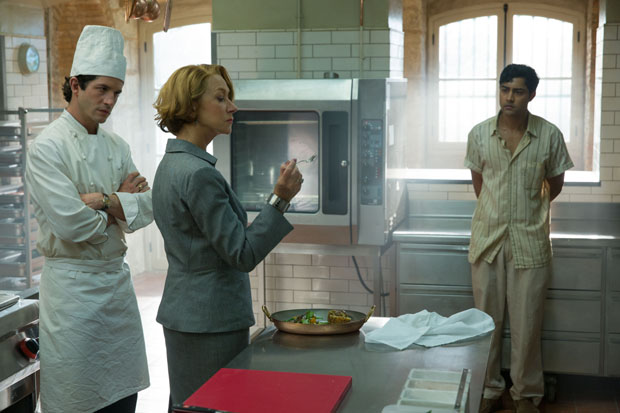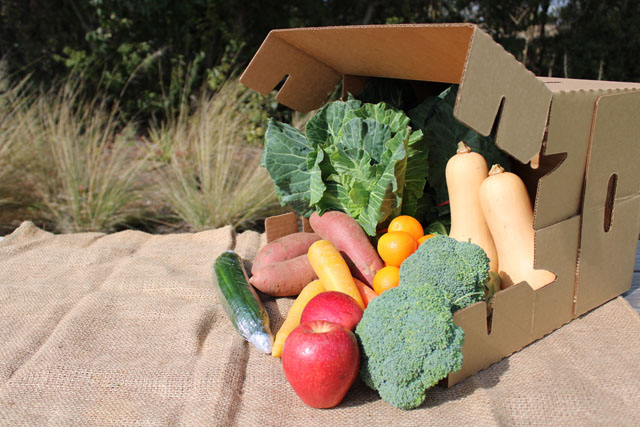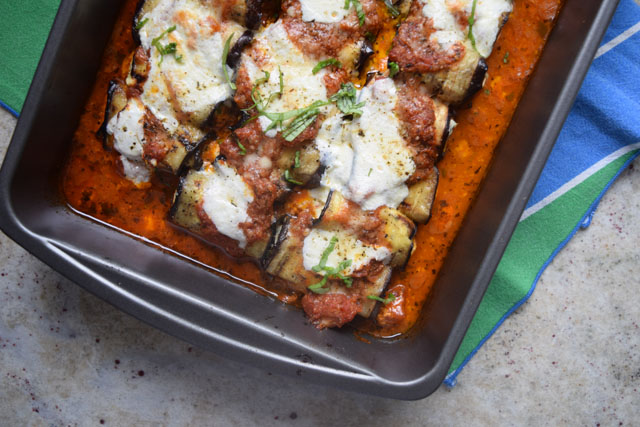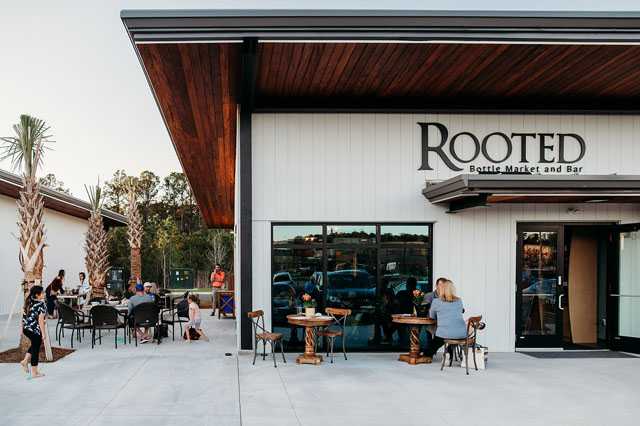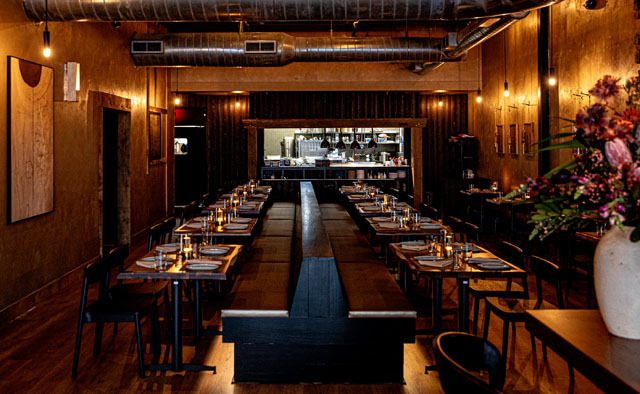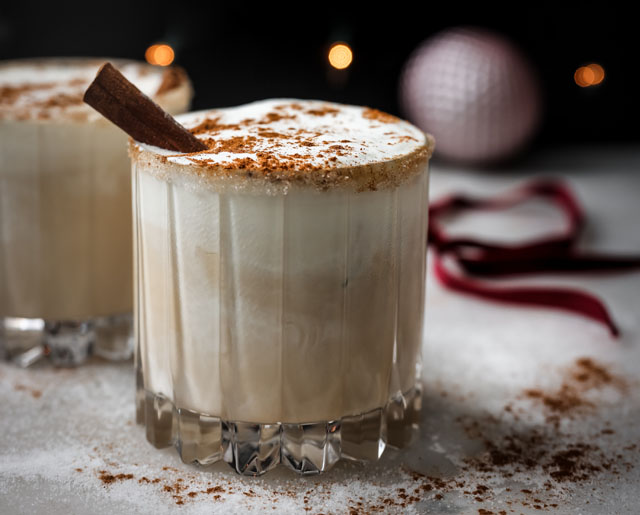Foodies Rejoice! "We'll Always have Paris."
27 Mar 2014
Text and Photos by Kim Byer

In the sunshine of my thirteenth year, while the tips of our South Carolina pines toasted, and the lake thickened into a red clay soup, I spent my summer inside. Not moping or brooding, but instead, mesmerized by the towering woman on the cooking show. My infatuation grew and, for weeks on end, I looked across our kitchen counter and gave my best high-pitched French Chef impression to an imaginary camera. I brandished salad tongs and gestured authoritatively to an invisible audience while following recipes in my mother’s church cookbook. Not exactly Mastering the Art of French Cooking, nevertheless, you never forget your first French toast.
Ah, Julia, you inspired us all.
Years of French toasts and French lessons later, I am in Paris, walking alone. The cold morning air is as blunt as a slap. While the city (along with my husband) is still sleeping, I descend into the Metro and travel across town to the 15th arrondissement. Crossing Rue de Vaugirard and turning right, then left, I spot a dozen people standing in front of a modern, downright nondescript building.
Walking closer, I see their faces. They are star-struck. Quiet. Nervous, no doubt. After all, this feels like the first day of school. They are foodies and certainly Julia Child groupies, too, and we are a scattered clan, now collected.
Le Cordon Bleu Paris, founded in 1895, is the most revered academy of culinary arts. It houses the very halls where our heroine first honed her knife skills. Or… Not. Child did visit the current halls once; however, it was long after she mastered classes in the original school in central Paris.
When I compare this building before me with my imagined Le Cordon Bleu Paris or even the vision brought to us in flashbacks of Technicolor on the big screen via Julie & Julia – of a stone carved structure clutched by ivy, wound with marbled hallways where students glide over golden floors of waxed herringbone that all lead to a grand kitchen where ancient copper cauldrons hang from the rafters and the smell of simmering bouillon perfumes the air – I am a bit disappointed, but not discouraged.
For the next twenty minutes, I skip alongside my American, Canadian and Japanese classmates as we eagerly follow Chef Bruno Stril and his translator, Deborah, along sidewalks and across intersections to the Saint-Charles market twenty minutes away.
Shopping in any Paris market is a sensory feast, but when led by a Le Cordon Bleu Master Chef, the colors seem more vibrant, the smells and sounds, more intense. Our collective adrenaline could lift a food truck.
Whole fish are cataloged in icy rows of grays and pinks. Mounds of blood sausage curl across wooden planks like serpents. Small gray shrimp, antennae intact, are offered up for the tasting, and a lone stall of crimson horsemeat opens for business, shocking the occasional American tourist. Under the produce awning there are crates of thumb-sized radishes, miniature wild asparagus and a cache of sage-green ice lettuce that looks as though it were picked straight out of the tundra. And all along the block, buckets of flowers stand in the morning sunshine as thick as a meadow. Watching Chef Stril operate, it’s clear that it will take bravado and our finest French accent to order, but the bounty is ours for the taking. However, it’s not ours for the picking or bagging. Vendors insist on selecting the plums that will be perfectly ripened at a specified future meal of our choosing.
Paris —the epicure’s epicenter—is a compulsory pilgrimage for cooks and foodies from all over the world. It’s where, in the 1800s Escoffier created veal stock and in doing so, freed umami—our dormant fifth taste; it’s where Julia Child and Simone Beck wrote the book that started an American French cooking revolution; it’s where Saturday night dinners inside Gertrude Stein’s salon began with hashish fudge and ended with framboise at sunrise; and it’s where, in the bottomless belly of the now bygone Les Halles, farm-to-table food was bought and sold for over eight hundred years. When you walk the streets of Paris, you walk in the wake of culinary giants.
There’s no need for timidity. And no time. If it’s your first visit or your twentieth, Paris is a city best devoured by the impetuous and free-spirited, yet organized foodie. On your first few visits, there are the obligatory sites: the museums, the cathedrals, the parks, the shops, The tower, etc. And every visit after that will have you returning to your favorites. For example, my husband and I never miss the Musee D’Orsay or a quick respite beneath its massive clock face in the Café Campana. And although the chandeliered and gilded dining room on the first floor, where the food is said to be as luxurious as the surroundings, has beckoned us for years, we’ve yet to break our sentimental tie to the café. Surely, the clock has us spellbound.
Over the years, we’ve accumulated dozens of sentimental treks: Les Deux Magots for Sunday brunch, the park pavilion at the foot of the Champs-Élysées for banana and hazelnut crepes, the Ile Saint Louis for Berthillon gelato, the Jardin des Tuileries for croque madames and a bistro along the rue Saint-Benoit where meringues bob like snowballs in baths of hot caramel sauce.
However, our essential trek is to the French version of a neighborhood steak house— le Relais de l’Entrecote. This restaurant breaks two fundamental French taboos: one, it’s a chain, and two, it’s all-you-can-eat. Stay with me, though, because it’s also phenomenal. And please don’t be put off by the long line of people waiting for a table. Despite the hunger pang inducing, often cold, but rarely long wait, inside, the atmosphere is warm and lively. Once you’re seated, your server will ask you two questions:
“How do you like your steak,” and “What would you like to drink?”
Quickly. Rare and red wine.”Or better yet, “Saignant et vin rouge.”
Instantaneously, (Yes!) a saucer heaped with delicate lettuce is placed before you. By now, you’re beyond hungry, and yet the pile of lettuce is surprisingly satisfying. It’s simply lettuce - no tomato wedge, no olive, and not a shred of cheese. Lettuce. Tossed with a light vinaigrette. And it’s delicious.
Next, dinner leaps from the magical simple salad into the mythic main course. The l’entrecote, a cut of beef similar to the flat iron, arrives, draped in a cloak of buttery herb sauce. The steak is supple and tasty, but it’s the sauce that would make Escoffier stir with pride. Your tongue tastes hints of anisette or perhaps whispers of tarragon and parsley or a soupçon of herbal heaven that you cannot — for love or espionage — deconstruct. Silver tongs appear and release stacks of long, thin, (ahem -- Authentic) French fries onto your plate. Finish these and more appear, along with more steak and more sauce, until you neither remember nor care where you ate the previous night.
Fortunately, there are kilometers of walking waiting for you after every meal, so burning off the butter isn’t a worry. While out wandering, one shopping destination you won’t want to miss is the venerable E. Dehillerin — the cookware Mecca of Paris. Part of the pleasure of shopping anywhere in Paris is knowing that you’ll be able to coolly mention your shoes, scarf, copper saucier, etc., were picked up on your recent trip. Although I’ve never been able to be very cool about it. From my mouth, it’s more like a gush. I mean, really, a copper saucier from E. Dehillerin?! This line of provenance merits a gush.
After your shopping spree, you should be armed with enough copper and enamel to properly cook a wolf. And I hope you bought a pot rack, because if you’re renting an apartment in Paris, your kitchen is likely an Ikea-appointed galley with miniature appliances, but with a scarcity of countertops and cupboards. In fact, excepting the price, most things concerning the Parisians and their homes (particularly rentals) are petite and, relative to we-who-hail-from-excess, sparse. Coffee machines are single serve over-the-stove espresso makers. On a shelf adjacent to the kitchen, you may find two espresso cups, two wine glasses and two champagne flutes. Overabundance is as rare as in-home entertaining. Parisians eat out. However, if you’re staying in Paris for an extended time, eating in will save you a few Euros (these will come in handy for the European VAT tax on your cookware) and will allow you to shop at markets and bring home bags overflowing with exotic fare.
Back in our Le Corden Bleu Paris classroom, Chef Stril answers technique questions while mincing mounds of perfect brunoise for a mirepoix. In the mirror above the range, his hands command our attention. Dressed in his whites and quintessential toque blanche, he mans the grill, doesn’t use a timer, scoffs at measuring and, by three o’clock, plates our Tatin de Tomates Confites au Crabe -- layers of lump crab and sautéed vegetables, tucked between rounds of puff pastry. Fillets of John Dory Grenobloise over a potato puree strewn with lemon segments and capers follow. For dessert, he carefully spoons strawberries macerated with wine and blackcurrants over Arborio rice steeped in coconut milk and rum.
Despite the paper napkin and the plastic desks for chairs, the exquisite lunch lingers in my mind beyond the cement walls, beyond the Metro where I wave goodbye to my new friend, Louise, beyond dinner where I relay every detail to my husband, beyond the flight home, beyond Paris.
“There is never any ending to Paris and the memory of each person who has lived it differs from that of any other. We always returned to it no matter who we were or how it was changed or with what difficulties, or ease, it could be reached. Paris was always worth it….” Ernest Hemingway, A Moveable Feast.

